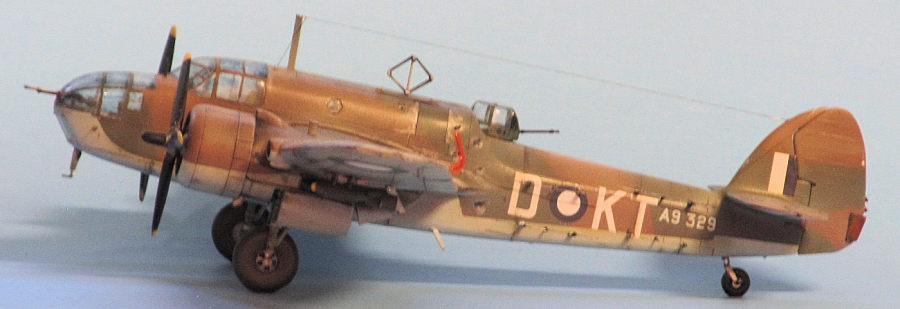
Novo/Frog 1/72 Beaufort Mk.I
| KIT #: | 337P |
| PRICE: | Various |
| DECALS: | None |
| REVIEWER: | Ryan Grosswiler |
| NOTES: | Less kit review and more pathology report |

| HISTORY |
The maligned Beaufort is one of those airplanes whose reputation stems less from any failings as a design and more from the dark days in which it was first employed. Designed under the GR ("General Reconnaissance") designation—meaning multirole bomber, torpedo bomber, patrol, and attack—to replace the biplane Vickers Vildebeest and complement other monoplanes entering service, the UK Air Ministry touted the design as an enlarged, improved Blenheim, itself an object that in September 1939 the people of Great Britain still fondly believed to be the "fastest airplane in the world". With what it was to face the moment it entered combat across the globe, the Beaufort would indeed have much to live up to.
Around October 1939, as the war in Europe was cooking off and RAF deliveries were getting started, eighty Australians arrived in Great Britain to learn how to build the Beaufort. Passing by them going the other direction was the eighth production airframe and some tooling and drawings on its way to Fisherman's Bend, near Melbourne: the aircraft had been selected as a learning tool to bring Australia's infant aircraft industry up to modern standards under a strategic Commonwealth technology-and-industry sharing scheme, with a view to regional defense. With the war spreading it was quickly decided to switch to the P&W Wasp engine for availability and commonality with Australia's imported Lockheed Hudson also entering service, a major side benefit being an increase in reliability as Bristol's own Taurus engine (used otherwise only in the Fairey Albacore) was proving itself a problem.
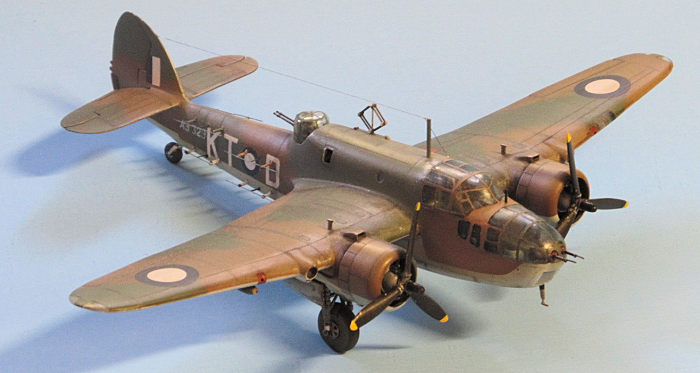 The first aircraft
assembled in Australia from Bristol components flew in May of 1941. By this time
dispersed production had been set up with major airframe components being
manufactured in other shops New South Wales, Victoria, and South Australia; the
first entirely-Australian aircraft flying three months later. Six aircraft were
available in Singapore when the Japanese Empire unleashed its fury on the
Pacific in December, but five of these were soon evacuated as the crews were
barely trained, few spares on hand, and were seen more as a liability than an
asset in comparison to the several squadrons of Vildebeests which remained at
the impending front. The sixth Beaufort staying behind was repositioned to Kota
Bharu, Malaya, acting as a special reconnaissance aircraft under the direct
command of Air Headquarters in Singapore. Soon it was sent out on a mission to
Thailand’s peninsula to verify sketchy reports that the Japanese had in fact
begun landings there. It did return with "evidence"—an airframe so badly
perforated by enemy fire that it had to be written off.
The first aircraft
assembled in Australia from Bristol components flew in May of 1941. By this time
dispersed production had been set up with major airframe components being
manufactured in other shops New South Wales, Victoria, and South Australia; the
first entirely-Australian aircraft flying three months later. Six aircraft were
available in Singapore when the Japanese Empire unleashed its fury on the
Pacific in December, but five of these were soon evacuated as the crews were
barely trained, few spares on hand, and were seen more as a liability than an
asset in comparison to the several squadrons of Vildebeests which remained at
the impending front. The sixth Beaufort staying behind was repositioned to Kota
Bharu, Malaya, acting as a special reconnaissance aircraft under the direct
command of Air Headquarters in Singapore. Soon it was sent out on a mission to
Thailand’s peninsula to verify sketchy reports that the Japanese had in fact
begun landings there. It did return with "evidence"—an airframe so badly
perforated by enemy fire that it had to be written off.
Thus, the Aussie Beaufort made its combat debut. While WWII air combat histories for a long time tended to 'dis' the Beaufort, in Australian hands the aircraft was actually a highly effective antishipping and strike platform, being (along with the Hudson) about the only modern bombing/strike-type aircraft available for that first critical year of war. After the cheeky Japanese daytime floatplane reconnaissance flight of Sydney harbor and the subsequent minisub activity and merchant sinkings nearby, Beauforts operated from Cairns, in defense of Australia itself. Gradually pushing out northeastward past the Great Barrier Reef to Port Moresby, the aircraft first hit Lae, then ranged further outward, eventually striking the Japanese stronghold at Rabaul. In this manner, the Beaufort was instrumental in establishing a line of Allied resistance well away from the Australian coastline.
As with any isolated population, the species began to evolve, mutate. Other than that initial switch of powerplant and the fact that DAP aircraft never had the UK Beaufort's distinctive trailing edge extensions, an enlarged and more rounded vertical fin soon appeared on the Australian aircraft to combat the aircraft's tendency to swing violently on takeoff. After that was an entirely new dorsal turret of local manufacture, changing the contours around that part of the fuselage and placing a bump in the aircraft's profile. By the end of the war the Aussie machines had sprouted several extra guns, external bomb racks, radar arrays, another pair of gear doors...and a reputation of being the aircraft the isolated nation needed right at a very dangerous moment in its history.
The Australian War Memorial has managed to put together a complete example primarily from airframe A9-057, with enough preservation that there's quite a bit of original paint on it. It's a fitting artifact to symbolize the emerging Australian national identity.
| THE KIT |
Frog, as the pioneer company to launch the world of constant-scale modeling in 1/72, produced in its time a massive and glorious catalog of kits, many of which today still hold up as fairly accurate, good representations of their subjects. This product is not one of them!
Shall
I count the ways this kit goes wrong? The canopies (both pilot's and
bombardier's) are much too short and shallow, and the prominent windows between
them on the fuselage right side are missing. The cowls look like a pair of
flower pots, the props like something at the bottom of a specialized kitchen
tool used to blend vinaigrette dressings. As discovered later, the wings are too
far forward and too thin. The leading-edge oil cooler intakes are similarly too
far outboard and depicted as simple tubes. Wheels and engines? Don't even think
about them! Clear parts useable only to make better molds for vacuforming.
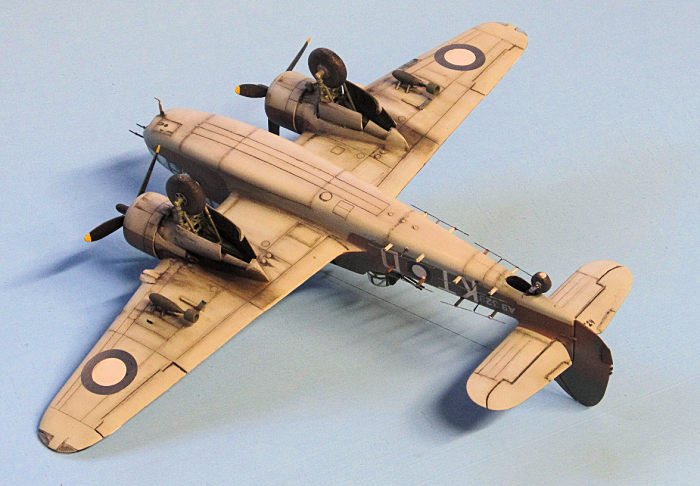 Mine was
one of those horrid post-Novo Soviet pressings made all the more vivid by the
stale-Hershey-bar (you know, the one you found in the back of the pantry from
the last time you made s'mores on your camping trip to Sequoia
two summers ago) brown color. Maybe it's better to state what they got right:
the Frog tooling did
capture the wing and fuselage outlines well, and the subtle, peculiar way the
fuselage cross-section flares outboard at the bottom between the cockpit and
bomb bay.
Mine was
one of those horrid post-Novo Soviet pressings made all the more vivid by the
stale-Hershey-bar (you know, the one you found in the back of the pantry from
the last time you made s'mores on your camping trip to Sequoia
two summers ago) brown color. Maybe it's better to state what they got right:
the Frog tooling did
capture the wing and fuselage outlines well, and the subtle, peculiar way the
fuselage cross-section flares outboard at the bottom between the cockpit and
bomb bay.
Back in the late '80s/early '90s this was an extremely hard-to-find kit, one of Frog's lamented losses whose molds were sold into the abyss beyond the Iron Curtain. It was also the only means to a 1/72 Beaufort in the year 1991, or so I thought. Ignorant of its limitations, I was therefore thrilled to locate a copy from Lencraft, a company out of the San Fernando Valley...Calabasas, if I remember correctly, which specialized (and were very good at) in locating kits of this sort. To them I forked over $15 for my bagged example and had it delivered right to my college dorm in Thousand Oaks. No decals, no instructions...and all parts encased in a heavy wafer of thick flash, almost like those early resin kits from the same part of the world at the time. No dorm-room project, this. It would have to wait.
All along, there was a good vacuform kit by Gerald Elliot of the UK, unknown to me. Plus Tasman Models had a replacement set of vac canopies to correct the entire nose. Also, both MPM and High Planes released much better kits around the end of the decade. Airfix now has its fine kit, and at least two companies make conversions for this to do an Aussie version. I know all this now! Back then the Internet was just an experimental communication system used between my especially geeky university staff members. Thus, my foolishness that would follow.
| CONSTRUCTION |
I'm going to summarize a process which would ultimately cross a span of twenty-eight years as succinctly as possible.
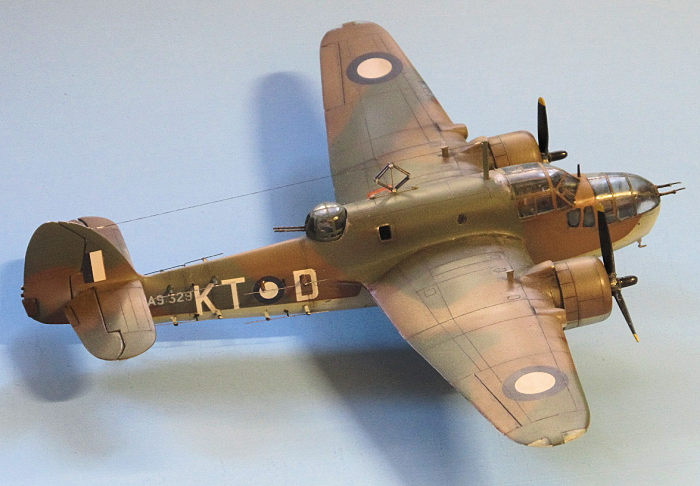 Our story begins on a
rainy San Francisco evening in the spring of 1996 when a young, unusually burly,
longhaired bicycle messenger— me—
college and an aborted career as a high school social-science teacher (it wasn't
the kids. They were great. The problem was the stupid adults) already behind
him, showed up to the IPMS Fort Mason monthly meeting. I had homed in on it
following an encounter with an advertisement while making a delivery to a
craft/hobby shop unusually far out on Geary Street. In I scuttled, like
Prufrock's crab, into this room full of clean-cut strangers, professionals from
the City. From out of my dripping backpack (I had pedaled all the way over to
the south abutment of the Golden Gate Bridge from Lower Haight) I pulled a most
unusual project: the Frog Bristol Beaufort, in progress. I plopped it on the
table up front, and after introducing myself awkwardly, explained my work so
far: I had glued the fuselage and canopy parts together, reshaped and rescribed
the glazings, and in a bold stroke of optimism for my skill level, cut off the
entire forward fuselage top, from the extreme nose to aft of the pilot's canopy,
to serve as a male mold for a vacuformed replacement.
Our story begins on a
rainy San Francisco evening in the spring of 1996 when a young, unusually burly,
longhaired bicycle messenger— me—
college and an aborted career as a high school social-science teacher (it wasn't
the kids. They were great. The problem was the stupid adults) already behind
him, showed up to the IPMS Fort Mason monthly meeting. I had homed in on it
following an encounter with an advertisement while making a delivery to a
craft/hobby shop unusually far out on Geary Street. In I scuttled, like
Prufrock's crab, into this room full of clean-cut strangers, professionals from
the City. From out of my dripping backpack (I had pedaled all the way over to
the south abutment of the Golden Gate Bridge from Lower Haight) I pulled a most
unusual project: the Frog Bristol Beaufort, in progress. I plopped it on the
table up front, and after introducing myself awkwardly, explained my work so
far: I had glued the fuselage and canopy parts together, reshaped and rescribed
the glazings, and in a bold stroke of optimism for my skill level, cut off the
entire forward fuselage top, from the extreme nose to aft of the pilot's canopy,
to serve as a male mold for a vacuformed replacement.
Dumbfounded silence met me, and the first words out of anybody's mouth were from IPMS Nationals winner Mike Braun:
"Now that's a labor of love." He turned to the rest of the group: "Isn't Keith working on one of those?"
Succeeding conversation verified it. Yes, there was indeed another misguided soul in this club who'd taken on this same exact project, and he showed up the following month. We met and got acquainted. Another Nats champion, Keith was a civil architect who lived in that nice area on the very south border of SF proper, and we over the next few months got together to work on our Beauforts after work. Keith's was molded in a fetching aquamarine. As this was the first time I'd ever had a modeling buddy, I learned quite a bit from our modeling sessions after work over a beer and supper made by his wife Karen. Then I'd throw the project into my pack and pedal the three miles back to the 'Haight. Over the next six months, I had the whole airframe together and scribed, a pair of Engines And Things resin cowl/engines where the kit's were supposed to be, but still with that forward fuselage yawning open from where I'd earlier filled, shaped, and sawed it away.
From there, this project waned and waxed, in direct connection with my course of life. Trying to reacquire some goals, I cut my hair and moved back to Orange County in 1997 and worked in a bookstore. It was around then, looking at the Warpaint plans, that I realized the Beaufort's wings were much too thin and about 2.5 scale feet too far forward. Thankfully, Squadron's Encore label had boxed the kit with photoetch and nice decals—the fools—and discovering they'd put lipstick on a pig, were dumping them for 99 cents. As an MMD distributor, Keith sent me one along with some other stuff, and I sawed the original brown wings off. The new grey mainplanes had their leading edges shimmed to build up some thickness. I cut away the oil cooler intakes, filled the holes, and sank into them a pair of US 250-lb bombs from the spares box further inboard and shaped them externally, to be drilled out later. The accurized wings were then butt-glued to the fuselage.
Still
searching for life purpose, I moved to Montana a year later and worked on my
uncle's ranch doing a lot of dry masonry and landscaping. He was a former Navy
A-4 pilot, and formation-buddy to another young ensign named Everett "Evie"
Alvarez, if you know that name, but I'll save that story for later. Living in my
parents' little c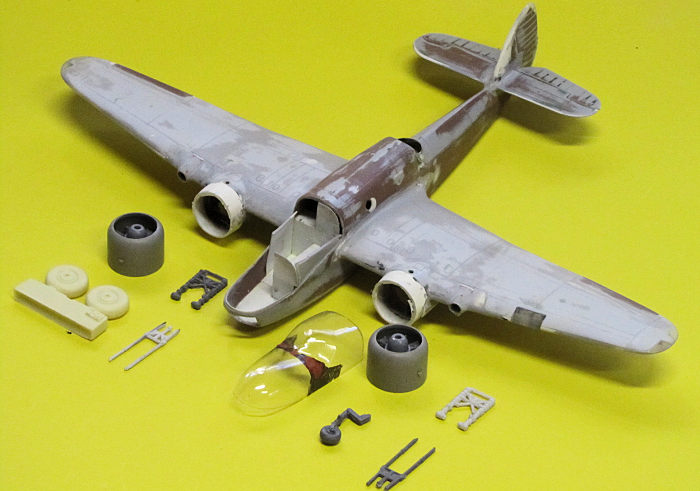 abin
out in the woods by a lake, I resumed work on the Beaufort. Through
correspondence, Keith and I returned attention to that forward fuselage/canopy
area. We decided that since we didn't have access to a vacuform machine with
enough suck, we would have to male-mold that area. I sent him my master part,
and he made a resin cast of it—something else new to me—which I then sanded down
half a millimeter or so all around when he returned it.
abin
out in the woods by a lake, I resumed work on the Beaufort. Through
correspondence, Keith and I returned attention to that forward fuselage/canopy
area. We decided that since we didn't have access to a vacuform machine with
enough suck, we would have to male-mold that area. I sent him my master part,
and he made a resin cast of it—something else new to me—which I then sanded down
half a millimeter or so all around when he returned it.
Phoenix 1999. Making the dubious decision to become an aviator after being offered the possibility of flying P2V Neptunes putting out forest fires, I had completed my private pilot's license up north, and realizing how much training time I'd lost waiting on northern Rockies weather, moved to the desert to do my instrument rating and all that other stuff. Keith just happened to be there, a geo-bachelor, managing construction on the new courthouse going up downtown. Here, we finally got our canopies molded. Keith on one trip brought down a stack of PETG sheets and it all came down to an epic battle one evening in my rat-hole apartment, on my old Mattel unit: the molds kept 'webbing' between the windshield and top of the bombardiers' canopy. Over the next couple of hours, we tried all sorts of attacks on this; holes drilled in that area, leaving it over the heat longer, raising/lowering the master over the platen...and finally we got two copies to come out right after about a dozen attempts. I whooped something genuinely spontaneous, joyful, and totally off-color—it may have involved the concepts of "starch" and “jeans”—and we both embraced in an equally spontaneous giant bear-hug. I cut out the canopy and fitted it with flanges on to the grateful fuselage in the day or two which followed.
But that was it for a long time: seems the chief pilot at my flight school nursed a grudge against the children of airline pilots. My roommate thankfully had overheard him—the man had carelessly left the door to his office open—stating to whomever it was on the other end of the line that myself and one other guy were for that reason not going to pass their CFI courses, "...no way, no how. I'm going to make sure of it!" In confirmation, two days later, in an epic battle of an entirely different sort he kept me in his office for 15 hours—yes, fifteen, six in the morning until nine that night, and no breaks—grilling me for the oral portion of the flight exam before finally coming to a question of minutia I couldn't answer and failing me. I packed up my life and the Beaufort and it all went into storage while I moved back out to the coast with my parents for the month that it took me to reestablish myself at another school and finally schedule my CFI checkride, which I passed without much issue, though I (still) can't do a Lazy-8 properly.
After flight school came a career, marriage, family. Twelve initial checkrides later, I was a long, long way from what I was. While modeling life did continue at a reduced pace, the Beaufort remained packed away and forgotten, a decade and a half whooshing right by. Then, in 2017, the Beaufort reappeared when it came up with some stuff during a Household Purge weekend, placed in the middle of a hallway. It announced its presence by the cracking noise it made when someone stepped on the box it was in. I tracked Keith down on LinkedIn, who pulled his out as well.
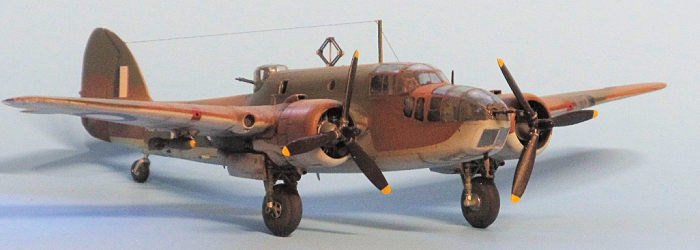 I resumed by making up
and placing styrene wheel
well inserts to fill the void provided by Frog. By then I'd also decided that
the Engines and Things cowls were pretty terrible, not at all representative of
the fine products the company would later produce, so I wrenched them off. Since
all this renewed activity Keith and I had stirred up obviously triggered
whatever spiritual mechanism it is that causes major manufacturers to kit and
release previously ignored subjects, he and I stepped up our efforts to beat
Airfix's announced Fall 2020 date of their own Beaufort, which we totally
missed.
I resumed by making up
and placing styrene wheel
well inserts to fill the void provided by Frog. By then I'd also decided that
the Engines and Things cowls were pretty terrible, not at all representative of
the fine products the company would later produce, so I wrenched them off. Since
all this renewed activity Keith and I had stirred up obviously triggered
whatever spiritual mechanism it is that causes major manufacturers to kit and
release previously ignored subjects, he and I stepped up our efforts to beat
Airfix's announced Fall 2020 date of their own Beaufort, which we totally
missed.
I launched on a prime-fill-sand routine to prep the surface, finishing with four rounds of guidecoat-fix-sand. Resin copies of the Hasegawa Beaufighter landing gear and Azur Maryland props were made and cast at this time. Barracudacast Beaufighter wheels were acquired. The engine cowl issue was finally resolved with a spare set of P&W engines from the MPM Hudson and a pair of Quickboost resin cowls for same. As Quarantine 2020 closed in, so did all the elements for the final assault on this little monster.
After 24 years and God knows how many hours since that rainy night in SF, it was finally time to begin working on the cockpit. As mentioned, I had already fitted that vacuformed canopy part and a fine flange of stretched sprue around the perimeter. Over a couple weekends, I filled the space with Cockpit Crap, painted, shaded, highlighted it, and finally glued that canopy in place. This was followed by more fill-sand-prime to make the long surrounding seam disappear. After all this work across three decades, the model's surface was covered with dissimilar materials with their dissimilar scribing properties, so getting all that consistent took some work.
Was that it? Oh, hell no! The Modeling Delay Sprites were to strike one more time as the local junior high/high school couldn't recover from the unintended consequences of COVID measures (and never did, as all discipline broke down...the kids at this writing still pretty much have the run of the place) and we suddenly had full-time homeschooling duties thrust upon us. However, by the end of 2023 my daughters had become fairly independent students. The Beaufort came back out one more time and its surface was finally finished and cleared of remaining doohickies, the canopy was masked, some antennas and their bases made up, the landing gear glued into place and masked, and (whew!) off it went to the paint shop.
| COLORS & MARKINGS |
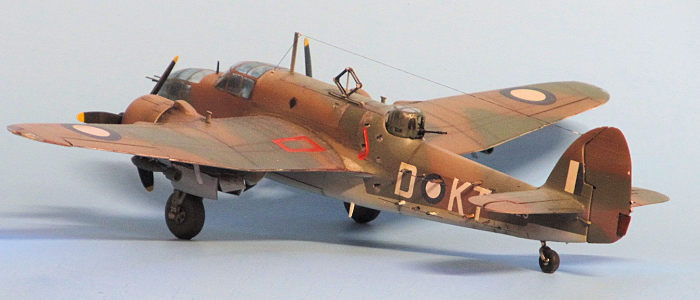 After
all the schturm und
drang above, nothing
special here; the model was painted and finished like any other. Weird. The
surface was already prepped,
so a white primer derived from Testor's square-bottle enamels went on followed
by a preshade. Then came undersides of Aussie Sky Blue, the distinctly reddish
Aussie Dark Earth, greener Dark Green. Decals pieced together from the spares
box. All sealed in with Future, followed by a wash, high lighting and post
shading, and a final semigloss clear. The surface detailing shows all the
varying skill levels of decades of skill-building, but thankfully photographic
references prove that Aussie Beauforts could get really filthy in the field.
These discrepancies were buried under heavy weathering.
After
all the schturm und
drang above, nothing
special here; the model was painted and finished like any other. Weird. The
surface was already prepped,
so a white primer derived from Testor's square-bottle enamels went on followed
by a preshade. Then came undersides of Aussie Sky Blue, the distinctly reddish
Aussie Dark Earth, greener Dark Green. Decals pieced together from the spares
box. All sealed in with Future, followed by a wash, high lighting and post
shading, and a final semigloss clear. The surface detailing shows all the
varying skill levels of decades of skill-building, but thankfully photographic
references prove that Aussie Beauforts could get really filthy in the field.
These discrepancies were buried under heavy weathering.
Twenty-eight years, two months, three days. This is one of those efforts that I can't decide whether it's Sisyphusian legend or simply pointless kinetic motion, like the frenetic automatons in Herbie Hancock's "Rockit" video. Via text, I've been needling Keith to finish his.
| CONCLUSIONS |
FOR THE LOVE OF GOD, BUILD THE AIRFIX KIT!!!!!
Still, I got a good friend out of the deal, and we had a genuinely shared adventure through it. Isn't that really what life is really ultimately about?
| REFERENCES |
Robertson, Bruce. Beaufort Special. Ian Allen Publishing. Surrey, UK 1976
Buttler, Tony. Warpaint Series No. 50 - Bristol Beaufort. Warpaint/Hallpark Books, UK 2000
Photocopies of detail shots filched from various sources long forgotten.
9 July 2024
Copyright ModelingMadness.com. All rights reserved. No reproduction in part or in whole without express permission.
If you would like your product reviewed fairly and fairly quickly, please contact the editor or see other details in the Note to Contributors.